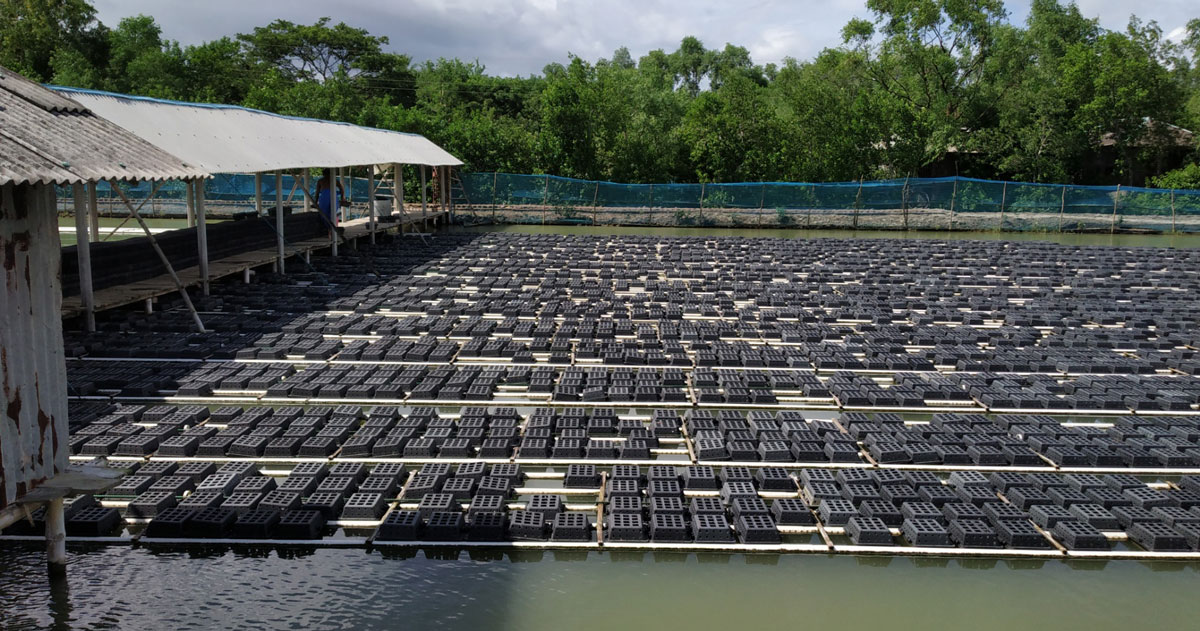Shrimp farming and environmental degradation: A deadly cocktail for Satkhira

Dhaka, 12 September, 2020: Migration from Satkhira to Dhaka shows the urgency of a well-planned disaster management initiative
Internal migration is now a major issue related to the national economy, as well as a subject of heated debate in the development arena. As a driver of economic expansion, internal migration can be seen as both a solution as well as an ailment for the country, as it propagates economic growth and urbanization at the expense of traditional rural lifestyle.
Taking the push and pull factors of internal migration as an overarching theme, this article discusses how shrimp farming and climate change-induced environmental detriment in Satkhira force people to migrate in search for better livelihoods. To assess how socio-economic conditions play an integral part in the migration decision-making process, habitants of Bauniabadh slum in Mirpur, who are originally from Satkhira, were interviewed.
Historically the main earning source for people in the rural Satkhira was rice farming. But due to the saltwater inundation caused by Cyclone Aila, the increased soil salinity has made it difficult to bounce back to farming.
As a result of saltwater intrusion, a sizable number of people lost their livelihood. The saltwater inundation, however, did bring in a newer opportunity for shrimp farming. As more people joined the shrimp farming bandwagon, it led to further degradation of the local livelihood.
Considering just the economic aspect, it takes roughly 12 people per 10 acres of land to farm rice whereas it requires only 4 per 10 acres for shrimp. Roughly 60% of the yield from rice farming is sold off and the rest is kept by the workers for domestic purposes leading to an annual profit of Tk1 lakh per season.
On the flip side, if the landowner were to do shrimp farming the person would be able to sell all the shrimp harvest per season, leading to a higher seasonal profit of roughly Tk3 lakh. Considering how lucrative shrimp farming was in comparison to rice farming and how much easier it was, the landowners usually opted for shrimp farming. This led to many labourers losing their livelihoods and forced them to search for alternative means. The shortage of work available in the fields leads the labourers to work as day labourers where they can earn anywhere from nothing to Tk500 per day. Alternatively, they can work as rickshaw drivers, who earn Tk400 per day.
Either of the options is not suitable to sustain a stable economic condition for a family. In search of a more economically stable and a better standard of living many of these labourers travel to Dhaka, where they would engage in working as rickshaw pullers, day labourers, brick workers, for example. Compared to what these individuals were earning as day labourers back home, by pulling a rickshaw in the city they can Tk1,000 – 1,200 per day or anything between no-work day to earning Tk2,000 BDT per day as day labourers.
As for brick workers, they earn at a rate of Tk1,000 per 1,000 bricks made. Women who migrate to Dhaka earn roughly Tk7,000 per month working as domestic helpers. Even though people migrate to Dhaka with aspirations of having a better standard of living, they are not satisfied staying in Dhaka. When talking to some of these migrants, it is evident that they did not account for the extra expenditure that they would have to incur, such as firewood, more expensive water rates and more expensive rent.
The lack of familiarity with their surroundings also takes a toll on their mental health as well, since in Dhaka they do not have the social environment they had back in Satkhira. Given the lack of support from peers in the city compared to that in Satkhira, many of these migrants mentioned that they wish to go back home once they have saved up enough money.
These people came to Dhaka with dreams to make a decent living while overcoming the increased threats of cyclones, and salinity intrusion in Satkhira. Many suffer from homesickness and pressures of getting accustomed to city life.
Just like the habitants of Bauniabadh slum, many others throughout the country have no alternative getaway to improve their situation. This reaffirms the need to have a well-planned disaster management initiative along with better accountability for implementing sustainable economic actions in Bangladesh to help the trapped and displaced population.
Shohail Bin Saifullah is working in the International Centre for Climate Change and Development as a Project Associate, his research interest lies in understanding internal migration of Bangladesh.
Read More
.

